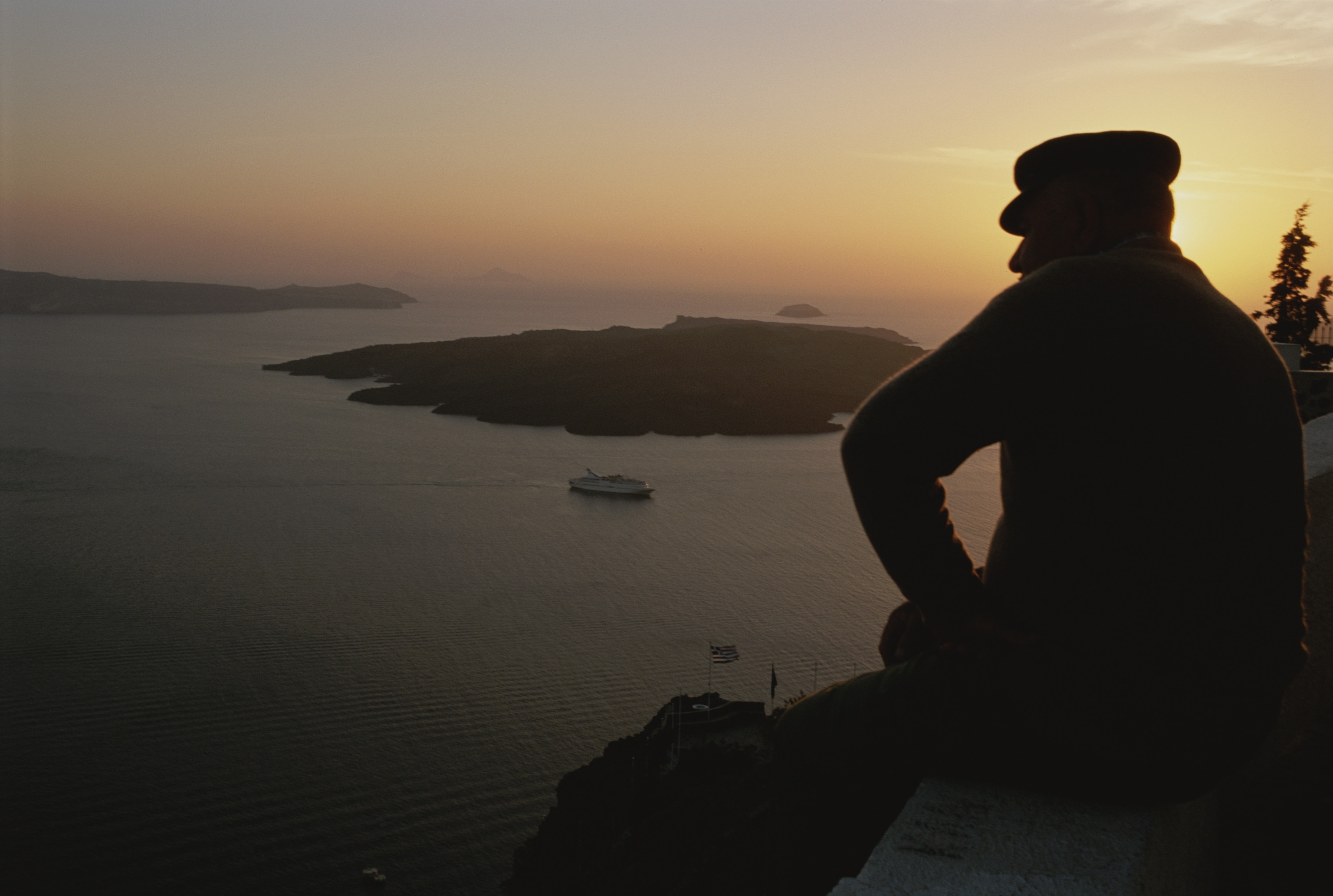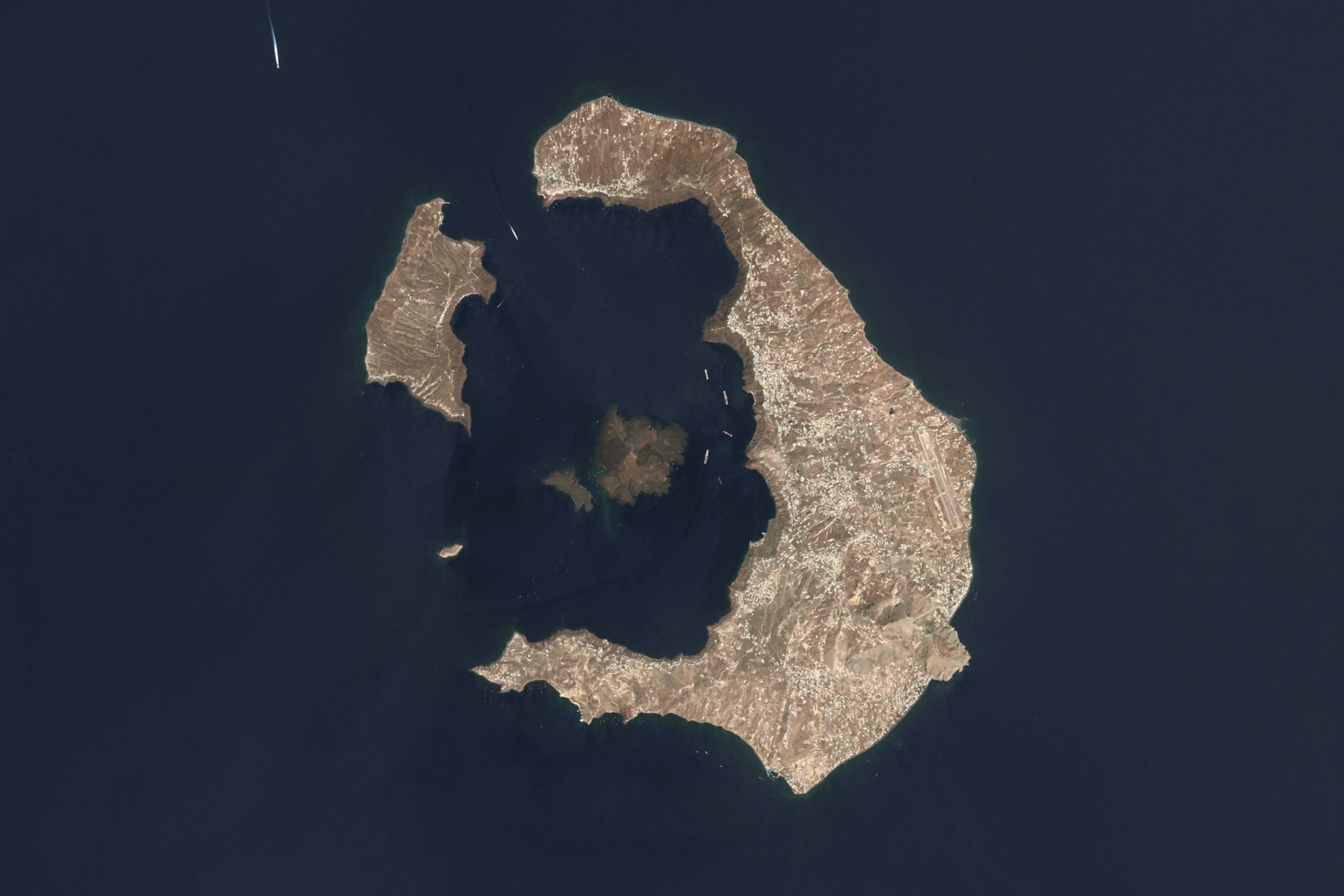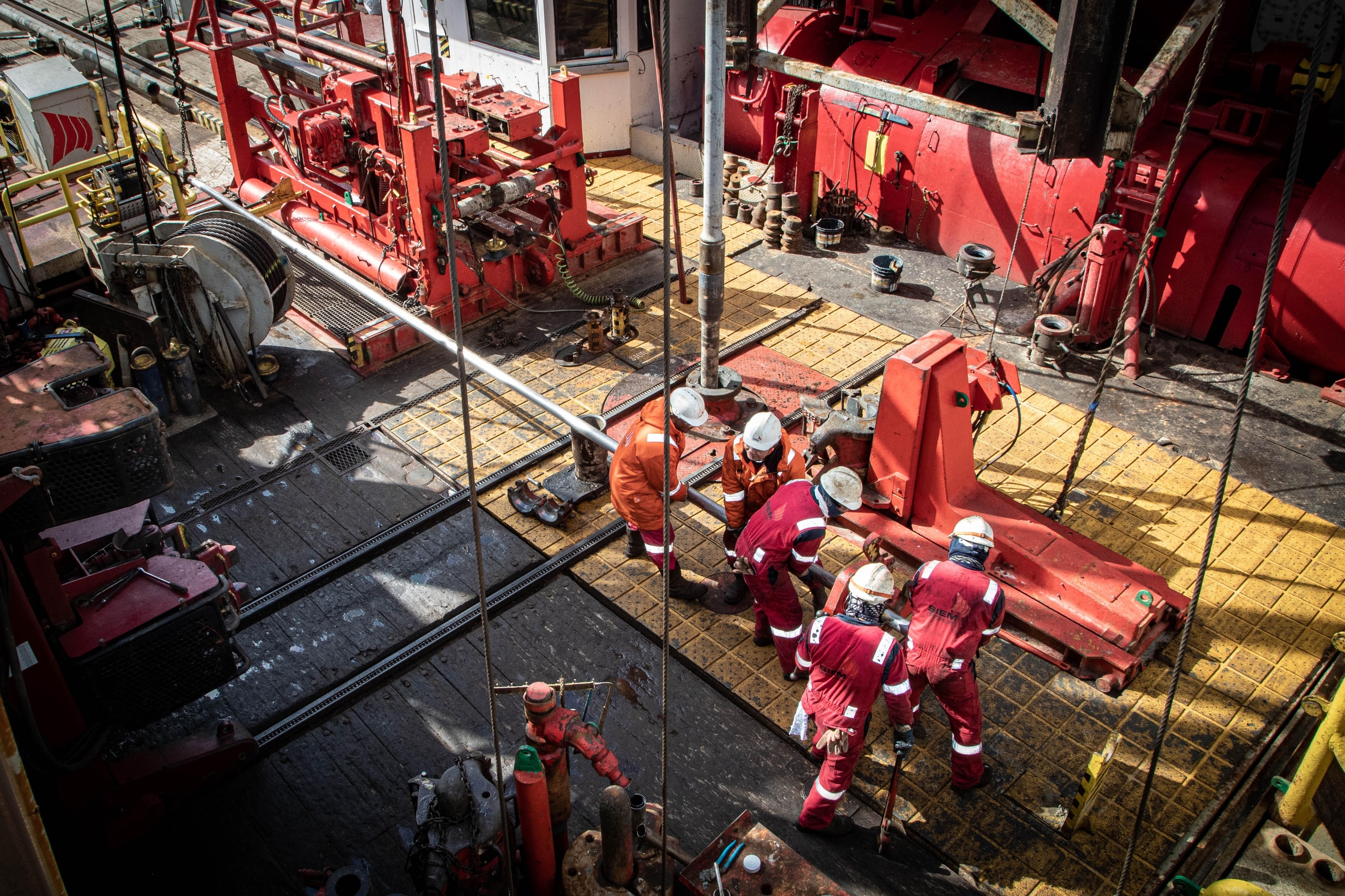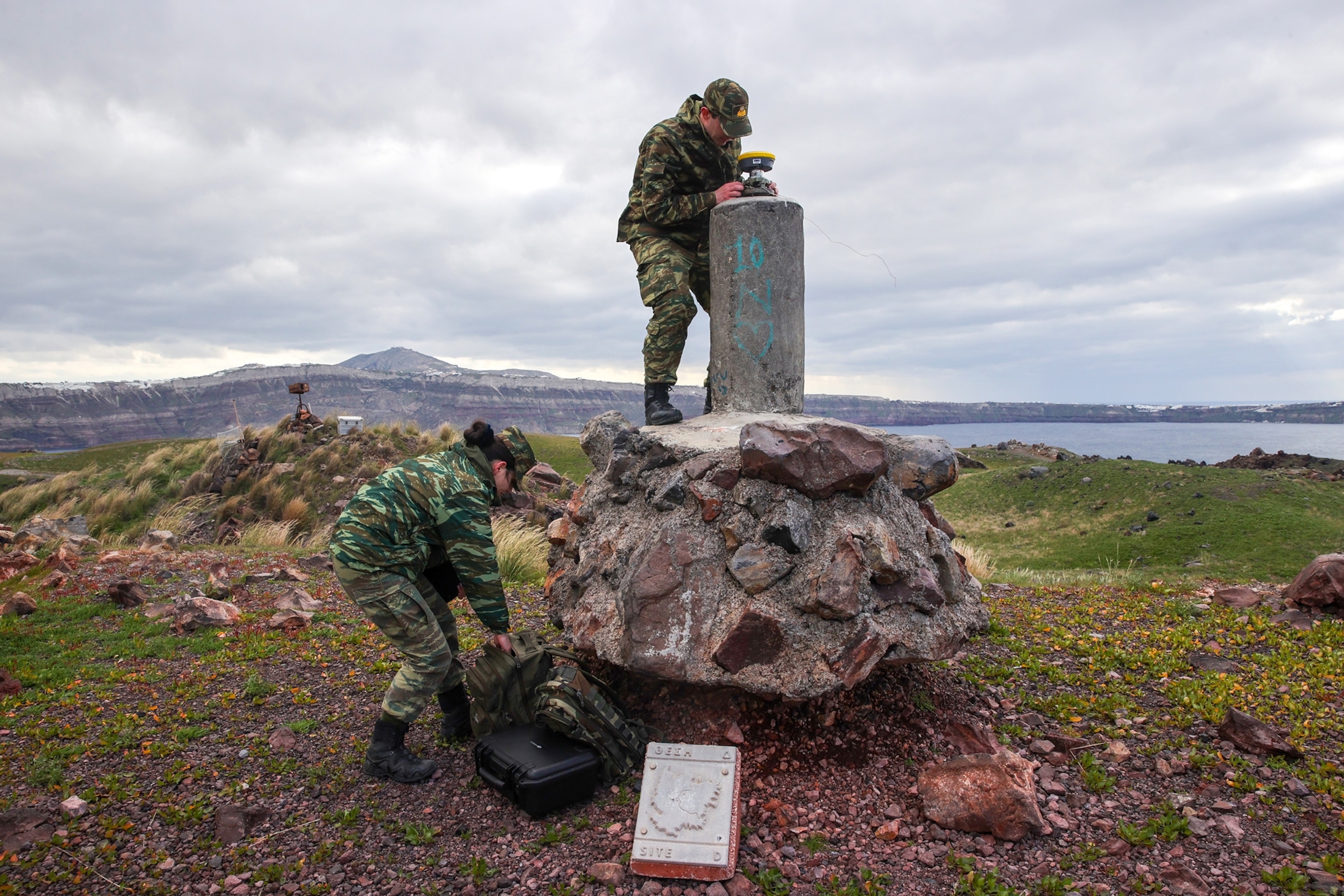Santorini’s volcano is hiding an explosive secret
Over 3,000 years ago, the eruption of Santorini’s volcano ended an ancient civilization. Scientists may know what the next big explosion could look like.

The Santorini volcano gives this Greek island in the Aegean Sea its undeniable aesthetic marvel. But it’s also at the center of a spectacularly violent origin story.
Arc-shaped Santorini has a flooded interior because, in the distant past, colossal eruptions have rapidly excavated a hole out of the island’s center. After each eruption, the Santorini volcano starts to recharge its magma supply, readying itself for another gigantic blast.
The most infamous of these outbursts took place in the year 1560 B.C. One of the most powerful eruptions in the past 10,000 years, this explosion and the resulting debris and tsunamis arguably marked the beginning of the end of seafaring Minoan civilization.

Santorini is somewhere in the middle of this cataclysmic cycle. Volcanologists today are most concerned with the island’s Kameni volcano. Effectively a rooftop extension of the considerably larger Santorini volcano, it’s a small mostly underwater edifice at the heart of Santorini with two peaks, Palea Kameni and Nea Kameni, poking above the water.
In the year 726, one of Kameni’s eruptions generated significant explosions and threw out myriad molten matter. Based on volcanic rocks recovered from the eruption, this was thought to be the worst-case scenario that Kameni could produce.
Now, a new study, published in Nature Geoscience, reveals that the actual eruption was one to two orders of magnitude more powerful.
They estimate that at least 100 billion cubic feet of lava, ash, and scorching-hot rocks were expelled from Kameni, making it comparable to the formidable 2022 detonation of the submarine Hunga Tonga–Hunga Ha‘apai volcano in the Pacific. “Such an eruption happening today would have major implications,” says Jonas Preine, a geophysicist at the University of Hamburg in Germany, and the study’s lead author.
(Tonga’s strange volcanic eruption was even more massive than we knew)
This is unwelcome news, both for the 15,000 people who live on the volcanic island of Santorini, and for the two million tourists who visit it every single year. “It raises the possibility that moderate to large explosive eruptions may be more likely than previously thought,” says David Pyle, a volcanologist at the University of Oxford who was not involved with the new work.
But “this is not a reason for the people of the Aegean to be panicking right now,” says Preine. The risk of a major eruption in the near future at the Santorini caldera is low, and there are no signs that one is on its way soon. And this study boosts volcanologists’ understanding of the island and its eruptive risks, allowing scientists to better shield people from future dangers.
(A huge volcano near Naples has been convulsing. What does it mean?)
“Submarine volcanoes are expensive to study,” says Preine. “But it’s worth it. There’s a whole zoo of hazards that could be associated with them.”


Investigating Santorini’s volcanic history
Santorini is one of many caldera-forming active volcanoes around the world—those that seem to operate on cycles culminating in massive explosions that form a cauldron-shaped depression (the “caldera”).
The island’s volcanic activity dates back around 650,000 years, and in that time, it has produced at least five of these catastrophic blasts, including that civilization-crippling Minoan eruption in 1560 B.C.
Since then, the island’s volcanic story has been written by the two-peaked Kameni volcano. Producing both effusive, lava-spewing eruptions and decently explosive ones, it last erupted in 1950, and has been quiet aside from some seismic unrest between 2011 and 2012. But that doesn’t mean it’s sleeping.
(These crystal lava shards are ‘four dimensional videos’ of a volcano’s underworld)
“The volcano is still fairly active, so there is, of course, always some risk,” says Isobel Yeo, a submarine volcanologist at the National Oceanography Centre in Southampton, England who was not involved with the new work. And when it comes to submarine volcanoes, scientists are acutely aware that they “are capable of taking us by surprise.”
The 726 volcanic eruption has been a focus for those hoping to understand how hazardous Kameni might be in the future. Historical accounts sound frightening: it was said that the waters of the bay began to boil, before “the entire sea was on fire,” says Preine—after which, deafening explosions blanketed the sky with ash and the land with pumice stones.
(Did Mount Vesuvius’ ash cloud really transform a brain into glass?)
But the volcanic evidence found by scientists didn’t seem to quite match up to those apocalyptic descriptions. “Pumice only forms and is distributed in explosive eruptions,” says Rebecca Williams, a volcanologist at the University of Hull who was not involved with the new work. But “a significant challenge to fully understanding the eruptive history of an island volcano is that most of the rock record is lost to the sea.”
The 726 eruption was no exception: only small traces of it were left on land. As a result, even though this was known to be a dangerous event, “the impact of this eruption was never really taken seriously,” says Preine.
What will Santorini’s next eruption look like?
Hoping to decode more of Kameni’s obfuscated volcanic past, members of the International Ocean Discovery Program drilled into the marine basins of the caldera at various sites, extracting sediment cores each time.
In doing so, they found a considerable volume of ash and pumice that they traced back to the 726 eruption. It quickly became clear that this eruption really was as significant and severe as the historic accounts had portrayed, one that likely involved thunderous underwater booms giving way to towering columns of ash and pumice.
An explosive eruption throwing out 100 billion cubic feet of erupted matter is certainly a frightening thought. But the reality was likely more nightmarish.
“The estimate they provide is at the lower end, because they are using only the volume of material deposited within the caldera,” says Yeo. “Lots of material was likely transported and deposited away from the volcano during the eruption.”
(How volcanic eruptions help nourish the world)
This study raises the possibility that Kameni is capable of greater harm than anyone suspected. A similarly explosive eruption today “raises the possibility not only of substantial ash and pumice fall, but also tsunamis generated by possible ’sector’ collapse of the island, which is built on unstable pumice deposits,” says Kathy Cashman, a volcanologist at the University of Oregon not involved with the work.
The team’s discovery also means that Kameni’s worst-case scenario is, well, worse than previously thought. Fortunately, scientists have long taken the island’s volcanic risks into consideration.
“Santorini should be taken seriously given the volcano’s tsunamigenic potential and the large number of people that could be affected,” says Amy Donovan, a volcanologist at the University of Cambridge who wasn’t involved with the work. “While this paper does say that 726 was bigger than we thought, it doesn’t significantly increase my concern about what was already a concerning volcano for multiple reasons.”
(Lava built this island—then entombed towns in stone)
Unsurprisingly, the volcano is also vigilantly monitored around the clock. “Any signs of unrest are likely to be detected in their earliest phases and warnings issued,” says Yeo.
The implications of this research won’t remain local to the island. Santorini island is widely considered to be one of the key sites whose study led to the modern science of volcanology.
It’s been extensively examined, its every accessible detail forensically analyzed countless times. “And still, it gives us large surprises,” says Preine. “This volcano that you’re looking at every day has some secrets that we’re still discovering.”
(She fell in love with the majesty of volcanoes—and changed how science sees them)
What, then, does that say about other caldera-forming volcanic complexes around the world, especially those submerged beneath the ocean?
“If we’ve been unaware of this at Santorini, we’re surely unaware of similar eruptions at other volcanoes,” says Preine. “This is a huge blind spot for the volcanology community.”
“Almost no submerged volcanoes are monitored,” adds Yeo, “and this needs to change.”
The clock is ticking, but the Santorini volcano offers scientists a look into the future.
